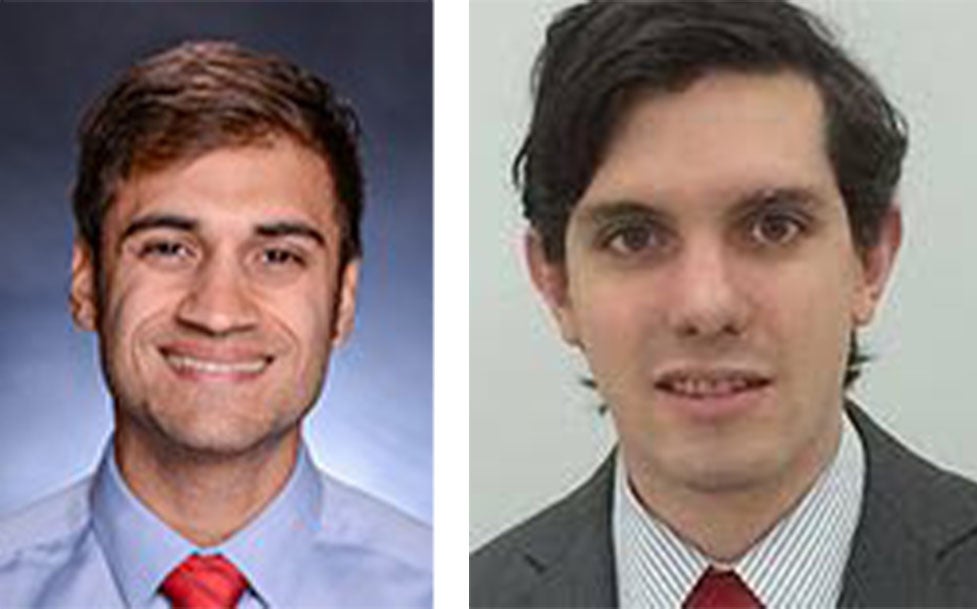UIC bioengineering researchers develop digital human brain that offers radical new model to study brain disease
UIC bioengineering researchers win 2019 Wiederhelm Award for most highly cited work on digital human brain
Text block one Heading link

Every award a researcher receives for his or her work is memorable, but when the accolade is for having the most cited paper, it takes on extra meaning for the authors to see their work validated in such a way. That is the case for Richard and Loan Hill Department of Bioengineering Professor Andreas Linninger who, along with his former PhD student Ian Gould, received the Microcirculatory Society’s 2019 Wiederhelm Award for the most highly cited original manuscript.
Linninger and Gould published the article “Hematocrit Distribution and Tissue Oxygenation in Large Microcirculatory Networks” in the journal Microcirculation. The work has been cited in 46 different manuscripts since it was published in July 2014.
“I think the paper introduces this somewhat radical new perspective, which is that the anatomy of the brain is mathematically describable and departs with old-school engineering models that had single cylindrical vessels and other simplifications that were not really true to the complexity of the anatomical space in the brain,” Linninger said. “The wide citations demonstrate the interest of the community to learn about these new processes and embrace them, even though initially people were skeptical.”
Linninger’s Laboratory for Product and Process Design (LPPD) has been focused on creating virtual brains through computer models and mathematics to map and understand the metabolic processes and blood flow within the brain. This model can then be used to study brain disease, the effects of aging, and dementia with an anatomically detailed model down to individual cells.
Linninger noted previous attempts at digitally recreating the neuronal connectivity to illuminate conscious portions of the mind have fallen short of expectations. Instead of neuronal networks, Linninger’s team started to work on brain metabolism by mapping the vasculature of the mouse cortex. With this data, they were first able to digitally generate an entire mouse brain on the computer. This work is now being expanded, to create a digital map of the metabolic human brain.
“We refuted the myth about the insurmountable complexity of the brain by generating anatomically accurate vascular network models that can be applied by everyone,” Linninger said.
For the award-winning paper, Linninger and his PhD student Gould synthesized a human brain structure that predicted metabolite transport across the blood-brain barrier. This allows scientists to envision what drugs could cross the barrier and how oxygen is metabolized to create energy for brain tissue.
Text block 3 Heading link

Linninger praised Gould for his outstanding contributions on this paper, and commended current bioengineering PhD student Grant Hartung for his work on a follow-up paper that used this digital model to demonstrate that the ratio of the volume of red cells to plasma in blood is not constant in the microcirculation in the brain but is actually graded along the cortical depth. This discovery explains how the deeper regions of the brain, which would otherwise be deprived of oxygen, maintain enough oxygenation.
“Through bold work by PhD students like Ian Gould and Grant Hartung fuels research advances in bioengineering labs like mine,” Linninger said. “This also shows that PhDs at UIC can perform work that is recognized at international levels. The citation-based award shows that scientists across the globe read what these UIC student pioneers write.
Linninger and his research lab are currently focused on using their digital brain models to study the effects of aging on the brain. He said scientists know about the small microscopic changes that take place as a person’s brain ages, but the community does not yet know what the impact of these changes on the whole brain are. The research is complicated by the fact that these changes are incredibly difficult to see and track in people while they are alive, and researchers cannot directly translate animal brain models to humans.
Neurologists know that the effects of dementia are devastating, Linninger said, which raises the question of why these small changes to the brain have such a huge impact. He noted that even though imaging technology has improved dramatically, this question remains elusive.
“But in the collaboration with UIC anatomical modeling experts and colleagues of the University of Oregon Science and Health University and the Polytechnique Montreal, we are working on quantifying the effect of microscopic changes on metabolic function and blood flow, so that we can learn about what the aging brain experiences and why certain changes at specific levels increase the risk of suffering cognizant deficits,” he said.
This aging work and other research being done at the LPPD shows why Linninger is so enthusiastic about this quantitative approach to biological research. He noted engineers have been incredibly successful in industry and other scientific fields, but they have yet to employ the same penetrating mathematical insights in biology and medicine as they have in other field such as physics.
“Our understanding of the universe is based on mathematical models. Nobody doubts that Einstein’s theory of relativity, which is all mathematical, has a place in the world,” Linninger said. “But in biology, there is still some hesitation to use mathematics for achieving knowledge gains. I think if mathematics can explain the origin of the universe, space, and time, it will not fail us in understanding biological processes.”
Read more about the LPPD lab here: https://lppd.bioe.uic.edu/.